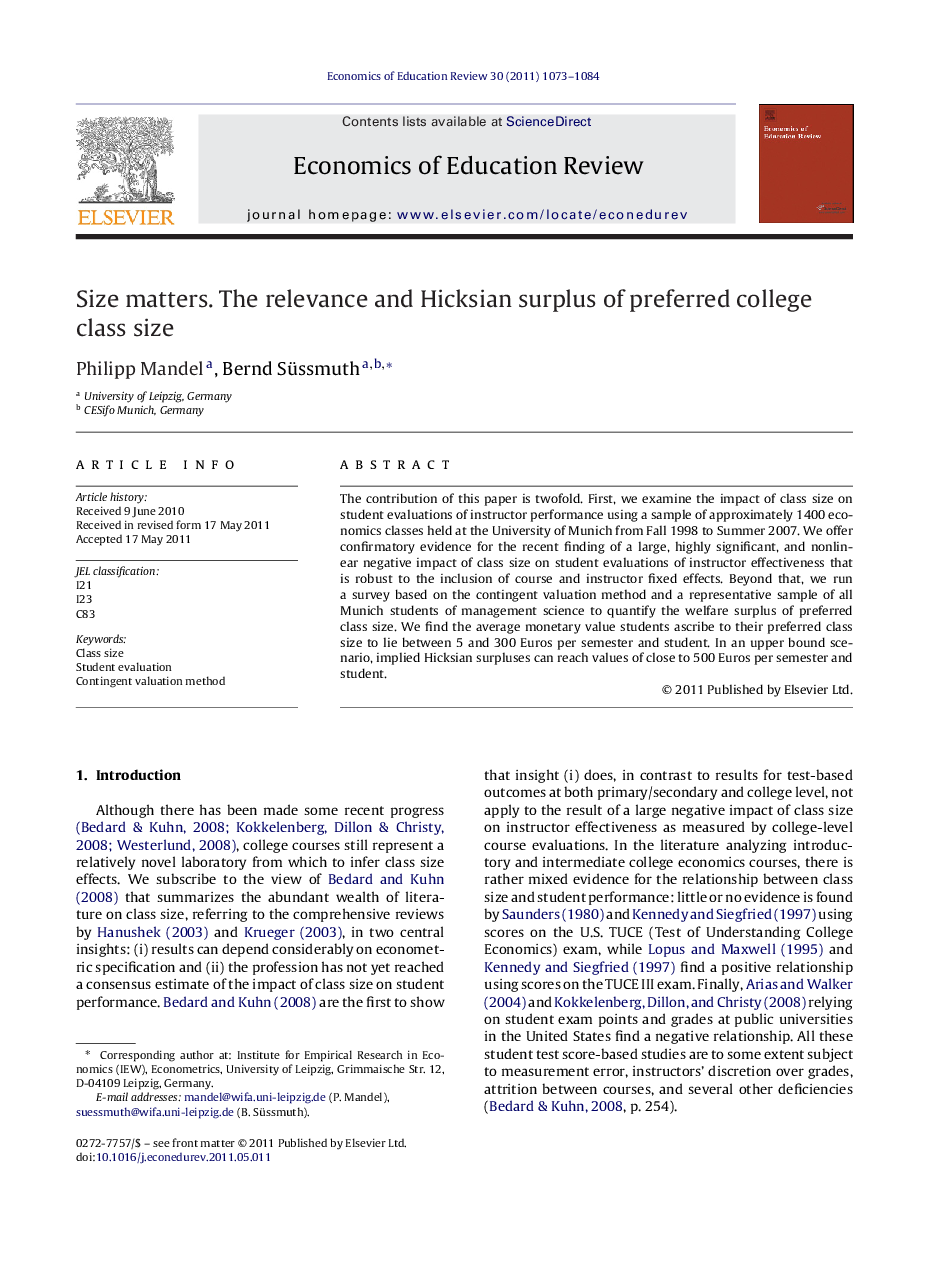| Article ID | Journal | Published Year | Pages | File Type |
|---|---|---|---|---|
| 354702 | Economics of Education Review | 2011 | 12 Pages |
The contribution of this paper is twofold. First, we examine the impact of class size on student evaluations of instructor performance using a sample of approximately 1400 economics classes held at the University of Munich from Fall 1998 to Summer 2007. We offer confirmatory evidence for the recent finding of a large, highly significant, and nonlinear negative impact of class size on student evaluations of instructor effectiveness that is robust to the inclusion of course and instructor fixed effects. Beyond that, we run a survey based on the contingent valuation method and a representative sample of all Munich students of management science to quantify the welfare surplus of preferred class size. We find the average monetary value students ascribe to their preferred class size to lie between 5 and 300 Euros per semester and student. In an upper bound scenario, implied Hicksian surpluses can reach values of close to 500 Euros per semester and student.
► We find sizable nonlinear negative impact of class size on student evaluations. ► Average value a student ascribes to preferred class size: 5–300 Euros per semester. ► Hicksian surpluses can reach values of close to 500 Euros per semester and student. ► Evaluations and welfare measures are elastic in classes with <100–125 students. ► Highest elasticity estimates up to a maximum class size of 19 students.
